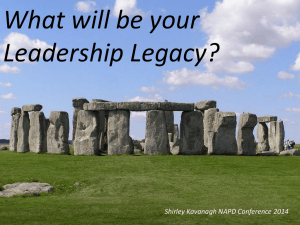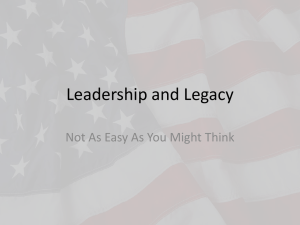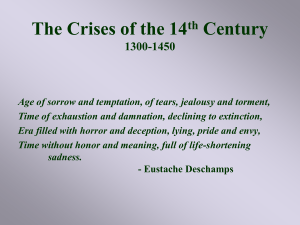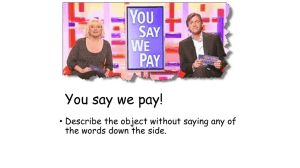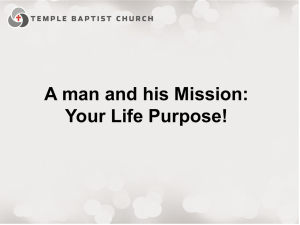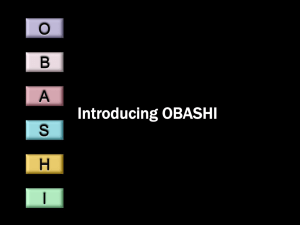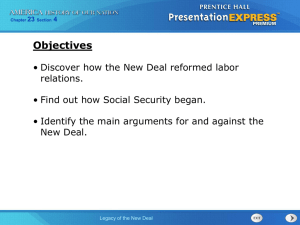Numbers That Count in Planned Giving
advertisement
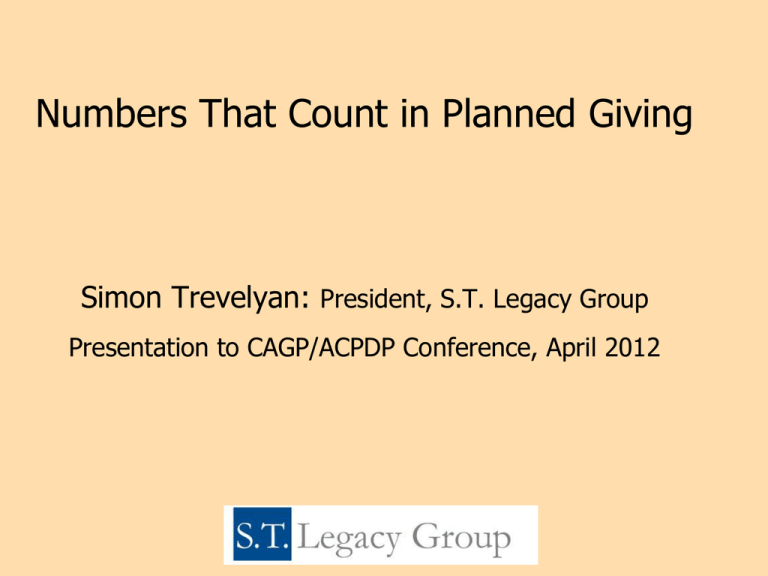
Numbers That Count in Planned Giving Simon Trevelyan: President, S.T. Legacy Group Presentation to CAGP/ACPDP Conference, April 2012 Number that Count in Legacy Marketing Legacy Conversion Ratio (LCR) % of donors or stakeholders who have made a legacy commitment to your organization Legacy Conversation Ratio The LCR is your program’s most important statistic. • What that figure is… • What plan you have to increase that figure… will largely determine the financial success of your organization and your success as a professional. Legacy Conversation Ratio The LCR is an expression of your ‘market share’. If you do not have plans to increase your market share, it is extremely unlikely that your program will grow significantly. Legacy Conversation Ratio Most charities: • Have an LCR well below 1% • No long-term plan to increase their LCR Some of the charities I have worked with: • Have an LCR between 3 and 10% • Have long-term plans to increase their LCR Legacy Conversation Ratio • The traditional donor pyramid is misleading • Charities can convert many more donors to a legacy gift than can to a major gift • 36% of donors will consider a legacy gift You can convert more donors to legacy giving than to major giving BC SPCA results in 2007 Number of gifts 120 legacy gifts received 250 legacy commitments Under 20 major gifts Value of gifts $5.5 million $12 million under $1 million Successful Legacy Conversion BC SPCA (30,000 active donors) LCR Goal Results Donors converted 10% in 10 years 7.5% reached in 8 years 2,500 Estimated future value $150 million Successful Legacy Conversion Seva Canada (2,200 donors, one fundraiser) LCR Goal Results Donors converted Estimated future value 5% in 5 years 3% in 3 years 70 $4.2 million Characteristics of programs that under-perform Charities with LCR under 1%, no long-term plans to increase LCR • Main focus: providing gift-planning advice • Promotional collateral focuses on how planned giving vehicles work, little on what gifts will do • A lot of time spent visiting donors with no clear outcomes or objectives • Few legacy leads and commitments generated Characteristics of programs that under-perform • Allocate few resources to marketing • Do little to promote their program beyond: – advertising in planned giving supplements – estate planning seminars or newsletters • Work in isolation from other departments • See planned giving as almost identical to major giving Characteristics of successful programs Charities with LCR of 3% or over, or with a long-term plan to increase LCR: • Generate legacy leads and commitments by asking donors for their advice • Focus on what legacy gifts will do, not on how they can be made • Spend less time visiting individual donors, but a large amount of time connecting with donors individually (asking for legacy gifts far more frequently) Characteristics of successful programs • Open a dialogue with individual donors about the charity’s vision and their interest in supporting that vision • Get large numbers of legacy leads and commitments • Allocate more resources to marketing • Work in collaboration with other departments • See planned giving as being quite distinct from major giving • Do a lot to promote their program • See gift-planning as irrelevant to most legacy gifts Successful legacy promotion How do successful programs promote legacy giving and engage their donors? Successful legacy promotion Legacy Branding (if you don’t have a brand, you should) To see more legacy brands go to www.stlegacygroup.com Successful legacy promotion Legacy Surveys (on-line and hard-copy) Opens a personal dialogue between the legacy officer and the donor about the organization vision, the donor’s values and the donor’s interest in supporting that vision with a legacy gift. Seeking a donor’s advice is the best way to secure a legacy gift. Returns from Legacy Survey System We recently designed a legacy survey system for Seva Canada. (Both on-line and mail surveys). It was sent to 200 Seva donors. • 80% completed the survey • 36% asked for legacy information • 6% had already made a legacy gift Legacy Video Donors who were sent the on-line survey were asked to watch a legacy video. To see more legacy videos go to www.stlegacygroup.com Case for Support Anecdotally, we know that donors are turned off by legacy information packages that are highly technical and dry. Information packages should: • Provide a compelling reason for leaving a legacy • Be attractive, engaging and inspiring Case for Support Is the cornerstone of any legacy program • a portfolio of your organization’s achievements • your current and future needs • your vision for the future • the importance of legacy giving to achieve that vision • a summary of your financial accountability • a guide for donors to leave legacy gifts It’s the key document that will inspire and engage your donors or stakeholders Cost-Effectiveness of Your Program and Marketing Tactics On an annual basis everyone should measure their: Cost per Lead (CPL) and Cost per Commitment (CPC) • • Globally – for you whole program For each individual marketing tactic If charities did this, and shared their results, the sector would have baseline data that could inform investment decisions. CPL for Different Marketing Tactics Cost to generate a legacy lead Advertising in supplements Estate planning seminars Estate planning newsletter Direct mail appeal for legacy gifts Legacy formvelope Customized legacy survey (via mail) Customized legacy survey (on-line) + video $2,000 - 10,000 $1,000 - 5,000 $1,000 - 5,000 $400 - 3,000 $100 - 1,000 $80 - 250 $40 - 200

